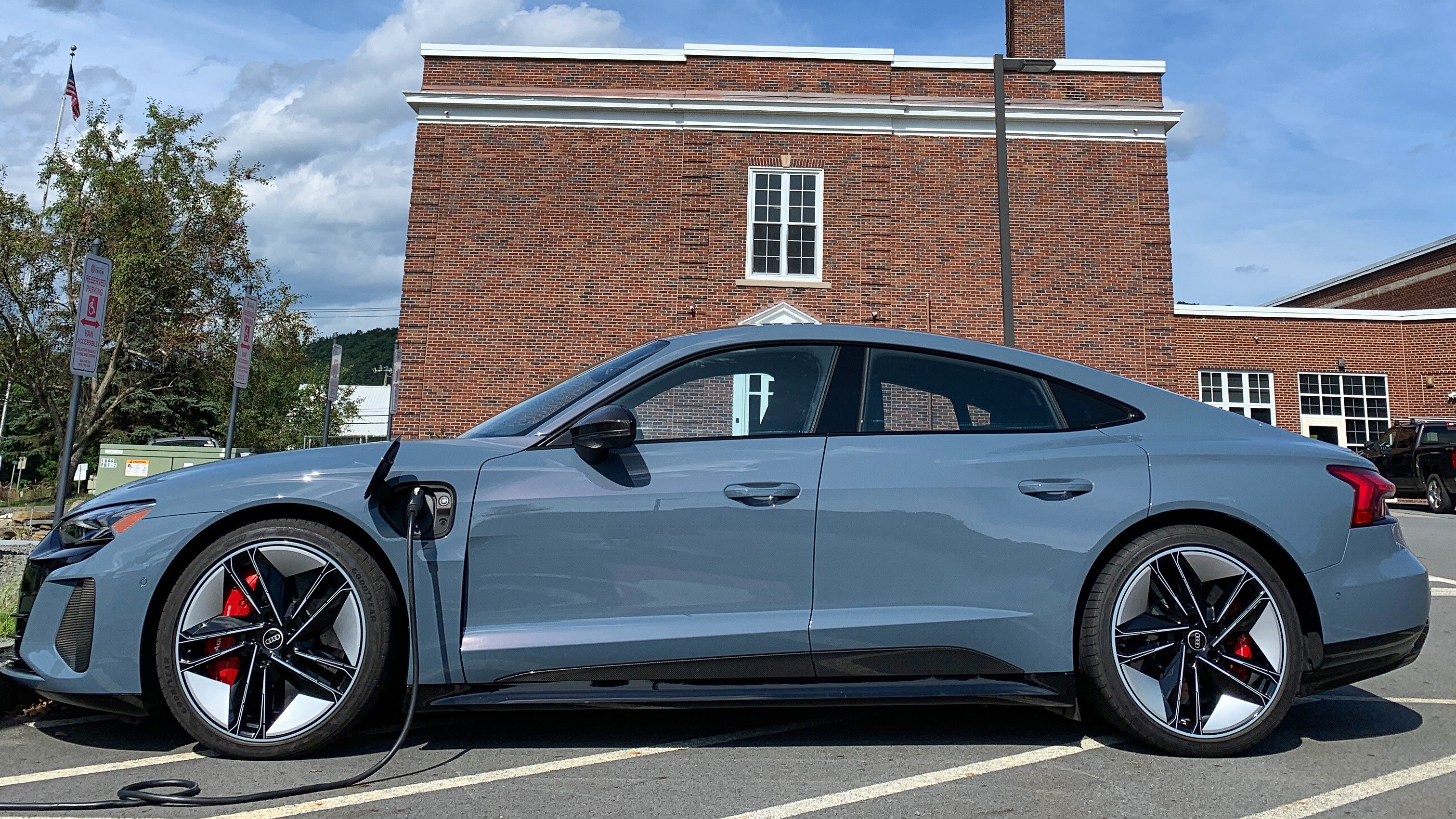Reinventing The Wheel For The EV Age
Why on earth do all the new EV wheels look like that?
I recently spent time with the 637-horsepower, $140,000 Audi e-tron GT RS, the four-ring brand's high-performance four-door electric vehicle. Built on a platform shared with the Porsche Taycan—one of our top picks in the category—the GT, as its name suggests, is a bit more of a grand tourer than its cousin from Stuttgart. This suits me just fine, and I delighted in every one of the 650 miles I put on the electric Audi. I even found joy in the puzzle of charging, without a charger at home or anywhere on the streets of New York City, where I live. (As with anything autophilic in car-agnostic NYC, it helps to be friends with the guys who run the Classic Car Club of Manhattan. Thanks again for the juice, gents.)
But after my week behind the wheel, one question lingered. What is up with the out-of-control 21-inch, disc turbine wheels on this car, which resemble a Cuisinart blade that would turn a cadaver into human mulch? And what do they say about wheel design in general, in our age of incipient EV takeover?
To find out the answers, we went to the source: Caesar Muntada, Audi's head of wheels and lighting Design. First, he described practical considerations. "Today, efficiency is key to a car's performance," Muntada said. "The answer at Audi are e-tron wheels with progressive and highly attractive designs, achieved in the metal shape, or with some specially developed inserts." The goals here are to reduce weight and aid in aerodynamics, as mass and drag are enemies of both acceleration, and, more important, range.
Secondly, there are aesthetic considerations. EVs have a thick battery pack down low, housing the cells that provide their power. This concretion is easier to disguise in a higher-riding crossover or SUV, but more difficult in a low-slung sport sedan. Large, visually arresting wheels can help to offset these proportions. "The bigger wheels give the e-trons a modern look and reduce the optical mass that the generous ergonomic and battery layout have generated," Muntada said.
Finally, and perhaps most important, is the semiotic importance of large wheels. With its fluid, flare-fendered, fastback shape, the GT RS has the good fortune of resembling its internal combustion engine-powered stable-mate, the RS7. But EV drivers (and designers) want their vehicles to stand out from the gas-guzzling crowd, to signify difference, if not to signal virtue.
"We gave the first generation of EV wheels a clear electric-semantic, with a multi-line graphic similar to the one we have on the Audi e-tron lights," said Muntada. "The use of the aerodynamically efficient wheel inserts opens the door to even further differentiation, with colors, shapes, or patterns."
Paul Snyder, the chair of the transportation design department at Detroit's College for Creative Studies—one of the world's premier institutions for teaching automotive styling—concurs, if a bit more vehemently. "Celebrating your difference as an EV is very important to some people as they project their choices out to the world," Snyder said. "These days you have to scream."
What does all of this mean for the proximal future, as we move into a world where a broad range of electric-powered models from every manufacturer will allow EVs to move from the choice of early adopters to that of fast followers, and even (hopefully, requisitely for the sake of our ruined world) into the mainstream?
Muntada has a few ideas. "For us at Audi, in the future the wheels will not only increase in size, but also in importance, probably achieving a similar 'forward leap' like the one we achieved with the Audi light design and technology," he said.
Snyder once again agrees, but adds a new twist—or lack thereof. "Despite the fact that designers and enthusiasts like deep hub wheels, many packaging requirements call for the opposite," he said. His comments presage a move toward more disc-like wheel shapes, and perhaps even a return to wheel covers, or even spats, to aid in efficiency and aero.
But he sees even greater change on the horizon, especially as power generation moves from one or more centralized locations, out to the hubs themselves. "In the near future, when the material technology is ready, the in-wheel motor will be at least as significant to packaging proportions as the switch from IC to EV," he says. "But by then there will be VTOLs flying all over the place."
